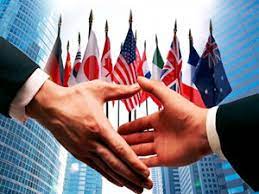
So in this week’s Post I was all set to hone in on the struggles over reenergizing faltering multilateralism in the current global order. Today’s troubles encompass the formal institutions – the Formals – from the UN, and many of its specialized agencies to the international financial ones – the World Bank, the IMF and the WTO. And the troubles extend to the Informals, the G7, the G20 to the BRICS+ and more. The struggles over multilateralism are the flip side of the return, seemingly ever more strongly power politics – the wars in the Ukraine and Gaza, and geopolitics, especially the rise in bilateral tensions between China and the United States.
But before I could go there, I couldn’t ignore the just excellent article – recommended by my colleague, and China expert, John Gruetzner – in Foreign Affairs by Zongyuan Zoe Liu, titled, “China’s Real Economic Crisis: Why Beijing Won’t Give Up on a Failing Model”. This very good piece leaned strongly into the discussion I had raised in my previous Alan’s Newsletter Post, ‘China, Seemingly, Stays the Course’. The Post chronicled the disappointment expressed by analysts and experts in the West primarily but in a rather more modulated form in China as well. The disappointment according to these experts emerged over the failure in the Third Plenum to initiate significant economic reform in the Chinese domestic economy and a clear determination to tackle domestic consumption.
Liu gets it right:
The Chinese economy is stuck. … But there is a more enduring driver of the present stasis, one that runs deeper than Xi’s growing authoritarianism or the effects of a crashing property market: a decades-old economic strategy that privileges industrial production over all else, an approach that, over time, has resulted in enormous structural overcapacity.
Simply put, in many crucial economic sectors, China is producing far more output than it, or foreign markets, can sustainably absorb. As a result, the Chinese economy runs the risk of getting caught in a doom loop of falling prices, insolvency, factory closures, and, ultimately, job losses.
Since the mid-2010s, the problem has become a destabilizing force in international trade, as well. By creating a glut of supply in the global market for many goods, Chinese firms are pushing prices below the breakeven point for producers in other countries. In December 2023, European Commission President Ursula von der Leyen warned that excess Chinese production was causing “unsustainable” trade imbalances and accused Beijing of engaging in unfair trade practices by offloading ever-greater quantities of Chinese products onto the European market at cutthroat prices.
Despite vehement denials by Beijing, Chinese industrial policy has for decades led to recurring cycles of overcapacity. At home, factories in government-designated priority sectors of the economy routinely sell products below cost in order to satisfy local and national political goals.
Now there continues to be some contention over whether in fact production is below cost but I I was pleased by Liu’s ‘recommendation’ that the two – the West and China – consider options other than just piling on the tariffs. Liu correctly points out the negative consequences of such trade policy:
A China that is increasingly cut off from Western markets will have less to lose in a potential confrontation with the West—and, therefore, less motivation to de-escalate. As long as China is tightly bound to the United States and Europe through the trade of high-value goods that are not easily substitutable, the West will be far more effective in deterring the country from taking destabilizing actions. China and the United States are strategic competitors, not enemies; nonetheless, when it comes to U.S.-Chinese trade relations, there is wisdom in the old saying “Keep your friends close and your enemies closer.
That is why I have suggested negotiating – and one aspect in this case could be Voluntary Export Restraints or VERS. VERS are not super policy actions – I get that but they do encourage bilateral discussions rather than just unilateral penalties. As Liu suggest:
The U.S. government should discourage Beijing from building a wall that can sanction-proof the Chinese economy. To this end, the next administration should foster alliances, restore damaged multilateral institutions, and create new structures of interdependence that make isolation and self-sufficiency not only unattractive to China but also unattainable. A good place to start is by crafting more policies at the negotiation table, rather than merely imposing tariffs. … If the government [China] also implemented voluntary export controls, it could kill several birds with one stone: such a move would reduce trade and potentially even political tensions with the United States; it would force mature sectors to consolidate and become more sustainable; and it would help shift manufacturing capacity overseas, to serve target markets directly.
While working through the WTO might be preferable, and many analysts suggest such an approach for multilateral trade frictions, realistically that course of action is out of reach for the moment.
So there you are on the Third Plenum and global trade. Let me at least turn to the original subject for this Post; let’s at least open the discussion on multilateralism and its problems. I was particularly attracted to a piece published recently by Pascal Lamy. Pascal Lamy (pascallamy.eu) is currently the Vice-President of the Paris Peace Forum, and coordinator of the Jacques Delors Institutes (Paris, Berlin, Brussels). Importantly, Pascal Lamy served two terms as Director General of the World Trade Organization (WTO) from September 2005 to September 2013. He is someone that is very familiar with critical aspects of the multilateral system. Recently his piece, ‘Reshaping the Global Order’ was published in a large edited volume by colleagues from the Center for China & Globalization, CCG, Henry Huiyao Wang and Mabel Lu Miao, Enhancing Global Governance in a Fragmented World: Prospects, Issues, and the Role of China. Now Lamy sets out the critical structural issues that impair today’s multilateralism efforts. As he says:
The main long-term, structural factors at play can be summarized by sovereignty as a founding principle of an international order, by the obsolescence of the previous order, and by the US-China rivalry.
It is not surprising that he identifies ‘sovereignty’ as the first key to multilateralism’s problems:
Sovereignty has been, is, and will remain the main obstacle to building a fully fledged international order as long as it is accepted as the core principle of international law.
So many analysts acknowledge the burst in new actors in the international system: substate actors, regions and cities and also non-state actors like NGOs, large public and private corporations but all struggle against dominant state actors. National sovereignty dominates international relations and often leads to unilateral actions that undermines wider cooperation.
Then there is ‘obsolescence’. This focuses around the elements of the system, especially the Formals that were put in place at the end of World War Two at a time when the Global South that has had such a recent impact on international relations existed primarily as colonies of the West:
Obsolescence has to do with the origins of the current global system, the architecture of which dates from arrangements made after the Second World War. The ‘universal’ nature of these arrangements is increasingly seen as a product of a past pattern of Western dominance at a time when new nation states are now reshuffling the old power distribution …
Lamy then targets the impact of the evolving international order:
All in all, the previous international order is being shaken by increasing North-South and East-West tensions and frustrations, and by a change in the balance between geoeconomics and geopolitics, the former losing the force it had gathered in recent decades, and the latter regaining its past dominance over world affairs. We are thus moving toward less of a rules-based system, and more toward the use of force. This context obliges us to consider new paths, tentative as they may be.
And finally Lamy underlines the rise of geopolitical tensions, especially between China and the United States, and the impact that these tensions have had on the current multilateral order:
The intensification of the US-China rivalry is the third main factor shaping the demise of the international order, as this rivalry increasingly pits the two main world superpowers against each other. Indeed, they now believe they have become dangerously vulnerable to each other—hence a change of view on both sides about globalization. Whereas the US and China previously celebrated the benefits of increased economic interdependence in fostering development and reducing poverty, they are now trying to address what today they consider as overdependence and have embarked on a decoupling journey which challenges the rest of the world with hard binary choices and which permeates international life in the form a sort of ‘cold war 2.0.’
So what is to be done? How can a multilateral system be revivified and made effective – bringing greater stability to the global order and energizing transnational global governance efforts?
That’s where we will start in the next Post.
Image Credit: Geneva Interdisciplinary Centre for Economics and Law
This Blog originally appeared as a Substack Post at Alan’s Newsletter – https://open.substack.com/pub/globalsummitryproject/p/the-trouble-with-todays-multilateralism?r=bj&utm_campaign=post&utm_medium=web&showWelcomeOnShare=true
Free Subscriptions are welcome as are comments



 It’s rather foolish to believe that even a ‘bullet wound’ would alter Donald Trump. His speech accepting the nomination for the Republican Party on Thursday night – over 90 minutes – proved that. What you see is what you get. But let me reflect for a moment on the consequences for Trump, and the political system, of this attempt on his life. Its impact it seems on American politics, and more particularly on the Trump third presidential run – well, at least for the moment, appears rather negligible. As Susan B. Glasser of
It’s rather foolish to believe that even a ‘bullet wound’ would alter Donald Trump. His speech accepting the nomination for the Republican Party on Thursday night – over 90 minutes – proved that. What you see is what you get. But let me reflect for a moment on the consequences for Trump, and the political system, of this attempt on his life. Its impact it seems on American politics, and more particularly on the Trump third presidential run – well, at least for the moment, appears rather negligible. As Susan B. Glasser of 
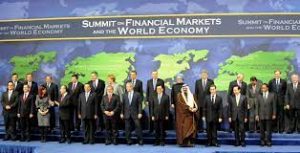 It is really not possible to begin this Substack Post without a quick glance at the first US Presidential debate of 2024. It was ugly. It was a tough night, especially for President Biden but I will let the political pundits to have their say.
It is really not possible to begin this Substack Post without a quick glance at the first US Presidential debate of 2024. It was ugly. It was a tough night, especially for President Biden but I will let the political pundits to have their say.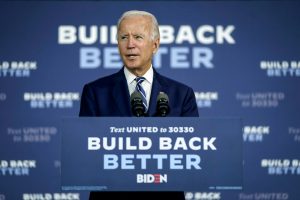

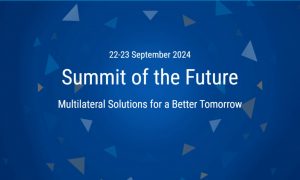 So, we are closing in on the consequential “
So, we are closing in on the consequential “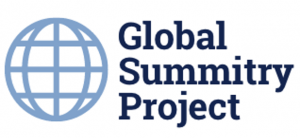 “Advancing global governance and human security for a better future”: A Symposium hosted by the Center for China and Globalization (CCG), America-China Public Affairs Institute (ACPAI) and the China-West Dialogue (CWD)
“Advancing global governance and human security for a better future”: A Symposium hosted by the Center for China and Globalization (CCG), America-China Public Affairs Institute (ACPAI) and the China-West Dialogue (CWD)